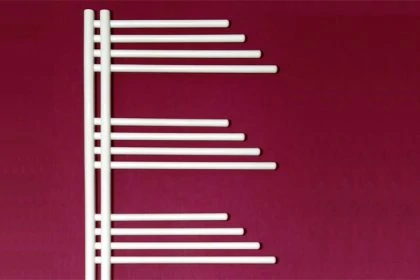Can the shape of a bicycle, in which the technical functionality is the determining factor for the shape of the product, be protected under copyright? The Advocate General rejects copyright protection if the shape is determined solely by its technical function. Previous patents on the product must also be taken into account in the examination.
A bicycle whose shape is determined by its functions – under copyright protection?

Can a bicycle, in particular the shape of a bicycle, which is determined by its functions in its form, be protected by copyright? The Tribunal de l’entreprise de Liège (Belgium) referred this case to the ECJ as the following questions:
Is European Union law, and in particular Directive 2001/29/EC, to be interpreted as meaning that works whose form is necessary to obtain a technical result are excluded from copyright protection? And, for the purposes of assessing whether technical functionality is the determining factor for a product, are prior patents or designs relating to the product or the process used to make the product to be taken into account?
Copyright would not affect patent law? Difficult in practice
This question is of great interest. This is because the question takes up different EU directives, which do not clearly point in one direction. This is because Articles 2 to 4 of Directive 2001/29/EC require Member States to provide for authors the exclusive right to authorise or prohibit the reproduction of their works (Article 2(a)), to authorise or prohibit the communication to the public of their works (Article 3(1)) and to authorise or prohibit their distribution (Article 4(1)). Article 9 of the Directive explicitly asserts that legislation on patents, trade marks or designs would not be affected by the Directive.
However, Regulation (EC) No 6/2002 explicitly states that in the absence of full harmonisation of copyright law, it is important to establish the principle of cumulative protection as a Community design and under copyright law. Member States are free to determine the scope of copyright protection and the conditions under which such protection is granted. Technological innovation should not be hindered by granting design protection exclusively to features which are technically conditioned.
In practice, this gives rise to the following problem: granting a patent always entails publication of the patent, since the aim is always to develop and improve the state of the art. The maximum term of protection for a patent is 20 years. Copyright, on the other hand, grants a much longer period of protection, covering the life of the author and seventy years after his death, regardless of the time at which the work was legally made available to the public. If, therefore, a product protected by a patent were also protected under copyright law, this would result in a very long term of protection, which would be contrary to Regulation (EC) No 6/2002.
Background to the case: Folding bicycles
In the case referred to the ECJ by the Belgian court, the case concerns bicycles. Brompton Ltd. was the holder of a patent on the bicycle’s folding mechanism (foldable into three positions: unfolded, “stand-by” and folded), which later became in the public domain. In addition, the founder and owner of Brompton Ltd. claims a copyright on the appearance of the Brompton bicycle, which he had created as a model in 1975. GET2GET, in turn, is a South Korean company specializing in the manufacture of sports equipment. It also produces and markets a folding bicycle, the Chedech model, which also has three positions similar to the Brompton bicycle.
GET2GET argues that the appearance of its bicycle is dictated by the technical solution sought and that it deliberately adopted the folding technique previously protected by the Brompton Ltd. patent, which has since expired, since this method is the most functional. Brompton Ltd. claimed that there are other three-position folding bicycles on the market whose appearance is different from its own bicycle, GET2GET had infringed its copyright on the Brompton bicycle.
Advocate General excludes functional form from copyright
Already in 2010, the Grand Board of Appeal (Lego Juris v OHIM of 14 September 2010) decided that a sign cannot be registered as a trademark consisting of the shape of goods which is necessary to obtain a technical result. Rights for technical solutions should be limited in time.
Consequently, the Advocate General recommended in his Opinion that a product should be excluded from copyright in so far as its form is determined by its functions. That is clear when the technical reasons leave practically no scope for creativity in the design. However, that may be difficult to determine in the case of a bicycle, the Advocate General conceded. This is because hybrid forms with functional and artistic features are not excluded from copyright protection from the outset. It was a difficult decision to determine which design elements could be protected by copyright in the case of a bicycle which, irrespective of its shape, required the presence of wheels, chain, frame and handlebars in order to be functional.
The referring court from Belgium tended to take the view that the appearance of the bicycle at issue was necessary to achieve the technical result. This is a question of fact, explained the Advocate General, which is a matter for the national court alone to resolve. In any event, an exclusion from copyright should only take place if the functional elements take precedence over the artistic elements to such an extent that the latter are irrelevant, the GA stated in his opinion.
Patent or design relevant for the assessment
In any event, a prior patent or design protection should be used to assess technical specifications for the shape of a product. For the patent suggests that there is a close connection between the patented shape and the desired result, the Advocate General explained: The inventor has assumed that the patented shape is suitable for achieving the desired functionality. Moreover, patent descriptions were so detailed that the functionality could be easily clarified on the basis of them.
It now remains to be seen whether the ECJ will follow the Advocate General’s recommendation. In the comparable and highly regarded Doceram case, the ECJ had decided that in order to assess whether the appearance of a product is exclusively determined by its technical function, it must be determined whether this function is the only factor determining these characteristics. The existence of alternative designs was not decisive in this respect.
Are you also looking for protection for your design or your product?
Our attorneys have many years of expertise in trademark law as well as in the entire field of intellectual property and are entitled to represent you in any court – in Germany and internationally.
Please contact us if you are interested.
Sources:
Opinion of General Advocate “Brompton bicycle”, EU:C:2020:79
Image:








Leave a Reply